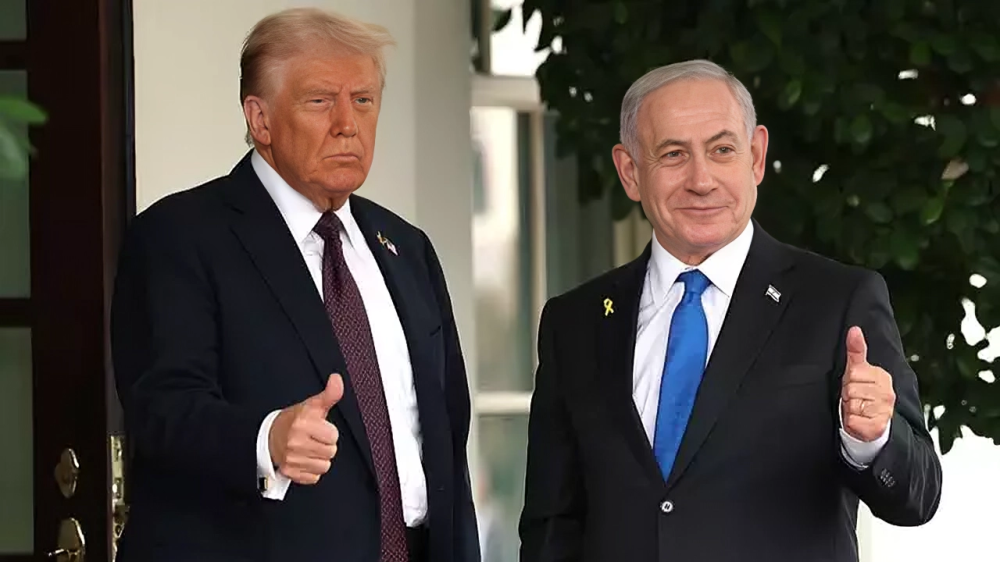Donald Trump has announced that the first stages of a groundbreaking peace plan between Israel and Hamas have been reached, signaling a potential turning point in the long-standing conflict between the two sides. Speaking at the White House on Wednesday, October 8, President Trump stated that the historic agreement is “very close,” following intensive, separate discussions with both Israel and Hamas.
The White House confirmed that Trump is even considering a trip to the Middle East in the coming days to oversee the implementation of this unprecedented peace initiative. Reports indicate that a Palestinian official, following a seven-hour negotiation session with the Hamas delegation and mediators from Egypt, Qatar, and Turkey, confirmed significant progress in finalizing the deal.
If the Israeli government approves the proposed plan, it could mark the beginning of an end to one of the most protracted and devastating conflicts in modern history. Officials are scheduled to meet on Thursday, October 9, to ratify the agreement, and a ceasefire would be enacted immediately upon approval.
The Israel-Palestine conflict has caused immense destruction, particularly in Gaza, where civilian lives and infrastructure have been severely affected. According to images and reports from international agencies, the ongoing hostilities have left countless families displaced and in dire need of humanitarian aid. The potential peace agreement offers hope for both relief and stability in the region.
President Trump took time to meet with relatives of Israeli hostages in Washington, DC, assuring them that their loved ones would be safely returned. In a post on Truth Social, Trump shared:
“I am very proud to announce that Israel and Hamas have both signed off on the first Phase of our Peace Plan. This means that ALL of the Hostages will be released very soon, and Israel will withdraw their Troops to an agreed upon line as the first steps toward a Strong, Durable, and Everlasting Peace.”
Trump emphasized that all parties involved would be treated fairly, adding:
“All Parties will be treated fairly! This is a GREAT Day for the Arab and Muslim World, Israel, all surrounding Nations, and the United States of America, and we thank the mediators from Qatar, Egypt, and Turkey, who worked with us to make this Historic and Unprecedented Event happen.”
The peace plan, if approved, outlines several crucial steps toward reconciliation. Key provisions include the release of Israeli hostages held by Hamas and Palestinian prisoners detained by Israel. Additionally, Israeli forces are expected to withdraw from Gaza to agreed-upon lines, facilitating humanitarian access and aid distribution. This could be a critical first step in stabilizing the region and alleviating the suffering of civilians caught in the conflict.
Currently, Israel’s government is scheduled to convene to review and approve the agreement, with a meeting set for 2:00 PM Jerusalem time (12:00 BST). Approval from the Israeli authorities remains the final hurdle before the ceasefire and the implementation of the first phase of the peace plan. Meanwhile, Hamas has already confirmed its agreement to the terms, though Palestine has yet to receive the final list of prisoners scheduled for release.
Although many of the finer details still need to be finalized, the agreement’s initial acceptance by both parties represents a significant breakthrough. Experts suggest that even partial implementation of the plan could pave the way for further negotiations, potentially leading to long-term peace in the region. Analysts note that the involvement of international mediators, particularly from Qatar, Egypt, and Turkey, has been pivotal in bridging the divide and ensuring that both sides have a stake in the agreement.
The release of hostages, set for Monday, October 13, marks a symbolic and tangible milestone in this process. Families of the hostages have expressed relief and hope that the conflict’s human cost may begin to be addressed. Humanitarian organizations are closely monitoring the situation, ready to provide immediate assistance once access to Gaza is granted under the peace agreement.
If successfully executed, the plan could transform the geopolitical landscape of the Middle East. It aims not only to end immediate hostilities but also to lay the groundwork for sustained diplomatic engagement between Israel and Palestine. Observers believe that a ceasefire accompanied by prisoner releases and troop withdrawals could reduce tensions dramatically, opening avenues for long-term collaboration on economic, social, and security issues in the region.
The global community has watched the Israel-Palestine conflict with concern for decades. Recurrent cycles of violence have claimed thousands of lives, displaced millions, and hindered development and prosperity. The potential peace deal, brokered with international support, could represent a rare opportunity to break this cycle and achieve a more stable and secure environment for all affected populations.
President Trump’s announcement underscores the United States’ ongoing role in facilitating peace efforts in the Middle East. While previous administrations have attempted to mediate between Israel and Palestine, this latest initiative reflects a coordinated approach involving multiple nations as mediators, emphasizing fairness and cooperation.
The planned aid entry into Gaza is particularly significant. Decades of blockade and repeated military operations have left the region struggling with basic needs such as food, medical supplies, and infrastructure. Facilitating humanitarian access as part of the peace plan not only addresses immediate suffering but also demonstrates a commitment to long-term recovery and stability.
In addition to the humanitarian benefits, the peace agreement could have a stabilizing effect on surrounding nations. Countries in the region, including Jordan, Lebanon, and Egypt, have often borne the indirect consequences of the Israel-Palestine conflict, from refugee flows to regional security tensions. A successful peace initiative could ease these pressures and foster greater regional cooperation.
While optimism is high, challenges remain. Both sides must ensure strict adherence to the agreed terms, and unforeseen complications could delay implementation. Diplomatic efforts will continue to be essential, particularly in monitoring the release of prisoners and the withdrawal of Israeli troops. The involvement of international mediators provides reassurance that disputes can be managed and that the process remains transparent and accountable.
Analysts emphasize that even partial success of the plan could encourage further peace efforts in other conflict zones. By demonstrating that longstanding disputes can be addressed through negotiation and compromise, the initiative could serve as a model for conflict resolution globally.
In conclusion, the announcement of the first phase of a peace plan between Israel and Hamas represents a historic moment. The release of hostages, withdrawal of troops, and facilitation of humanitarian aid provide tangible evidence that progress is possible. Approval by the Israeli government will be the decisive step, with the potential to bring a ceasefire into effect immediately.
As the world watches, the coming days will be critical in determining whether this historic effort can achieve lasting peace. Families of hostages are preparing for reunions, humanitarian agencies are readying aid shipments, and international observers remain cautiously hopeful that a durable resolution may finally be within reach.
This peace plan, brokered with the collaboration of multiple nations, may not resolve every conflict in the Middle East, but it could mark a turning point. The first steps have been agreed upon, and if implemented faithfully, this initiative may offer a glimpse of a future where dialogue replaces conflict, and hope replaces despair.

Emily Johnson is a critically acclaimed essayist and novelist known for her thought-provoking works centered on feminism, women’s rights, and modern relationships. Born and raised in Portland, Oregon, Emily grew up with a deep love of books, often spending her afternoons at her local library. She went on to study literature and gender studies at UCLA, where she became deeply involved in activism and began publishing essays in campus journals. Her debut essay collection, Voices Unbound, struck a chord with readers nationwide for its fearless exploration of gender dynamics, identity, and the challenges faced by women in contemporary society. Emily later transitioned into fiction, writing novels that balance compelling storytelling with social commentary. Her protagonists are often strong, multidimensional women navigating love, ambition, and the struggles of everyday life, making her a favorite among readers who crave authentic, relatable narratives. Critics praise her ability to merge personal intimacy with universal themes. Off the page, Emily is an advocate for women in publishing, leading workshops that encourage young female writers to embrace their voices. She lives in Seattle with her partner and two rescue cats, where she continues to write, teach, and inspire a new generation of storytellers.









